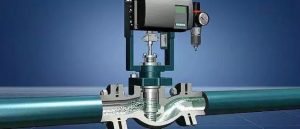How Does Emergency Action Valve Work?

What is Emergency Action Valve Work?
When malfunctions occur, in order to ensure the safety of the system, it is often necessary for the valve to quickly open or close within 0.2 to 1 second. Sanitary regulating valve with this function is called the quick action valve.
Currently, the electric actuator hasn’t yet been able to meet this requirement. We can only use a pneumatic valve with an emergency action device to achieve this purpose. As for the type of valve body used, we should consider it according to the actual working conditions. It can be chosen from the top ten types of regulating valve, such as quick action butterfly valve, quick action full-functional ultra-light regulating valve, quick action single seat valve, etc.
Emergency action valve is an actuated valve designed to stop the flow of a hazardous fluid upon the detection of a dangerous event. This provides protection against possible harm to people, equipment, or the environment.
How Does Emergency Action Valve Work?
1. The Mechanism of Emergency Action Valve
After the valve receives the emergency action signal, the solenoid valve is switched from the vented state to the exhausted state, breaking the pressure balance of the quick action valve, which is switched from the vented state to the exhausted state.
As the air is discharged into the atmosphere by the quick action valve (the exhaust speed can be controlled by the restrictor valve), the compressed spring inside the actuator is quickly reset, opening, or closing the valve.
2. Precautions to Take in Emergency Action Valve Applications
(1) The valve stroke should not be too large. This helps improve the speed of action.
(2) The speed of action should not be too fast. Too fast action will cause damage from impact. Therefore, we should lower the speed whenever possible. 0.5 seconds is better than 0.2 seconds; 1 second is better than 0.5 seconds.
(3) The speed of action of the emergency shut-off valve should not be too fast.
(4) Due to the low frequency of action, we should use a highly reliable solenoid valve to improve safety and reliability.
(5) It usually only takes about 4 to 5 seconds for the electric quick shut-off valve to complete the stroke (90 degrees).
Conclusion
Thank you for reading our article and we hope it can help you better understand the mechanism of the emergency action valves. If you want to learn more about emergency action valves, we would like to advise you to visit Adamant Valve homepage for more information.





